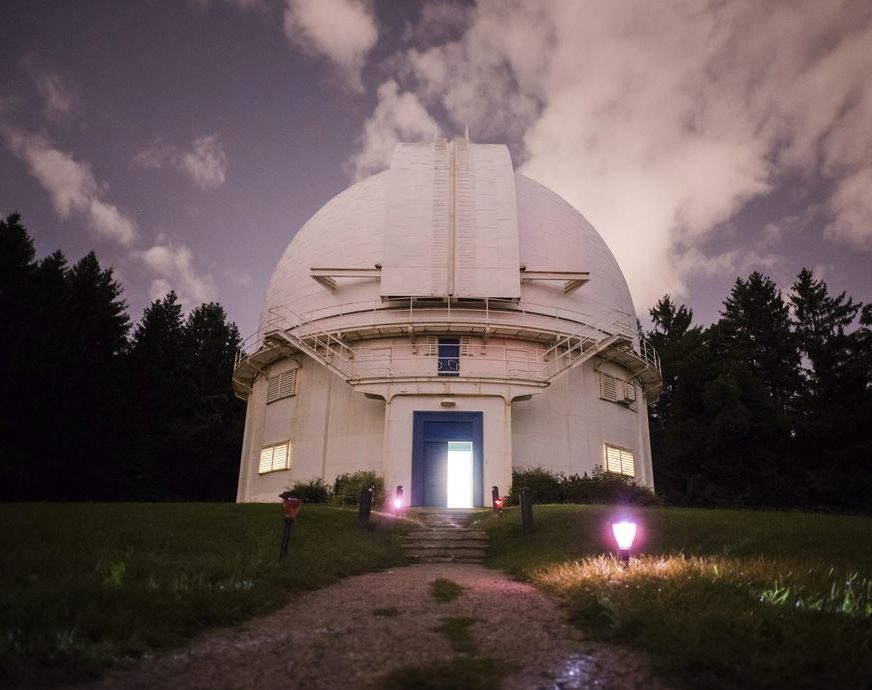The David Dunlap Observatory in Richmond Hill, Ontario, reopened its doors to the public this summer. The Royal Astronomical Society of Canada, Toronto Centre, offered some tours between 2009 and 2016, but the DDO has remained largely unexplored by the general public since 2008.
Maggie MacKenzie, Richmond Hill’s heritage center coordinator, told CBC the town wants to raise awareness about the observatory to draw in visitors.
Located less than an hour from downtown Toronto, the DDO is open every Saturday. Visitors can watch the 1.88-metre reflector telescope in operation, look at the stars through additional telescopes, and listen to guest speakers. The observatory offers tours one Sunday a month as well as a summer space camp for children.
The observatory experienced some struggles after it was sold by the University of Toronto in 2008. It was involved in litigation over its ownership, and there were some questions about how it should be maintained. The town of Richmond Hill currently owns the observatory and part of the surrounding property.
The observatory has some historical significance. Its 61-foot dome was built in England and arrived by ship in 1933. At the time of the facility’s opening in 1935, the telescope was the world’s second largest. Much of the observatory and the administration building is original, and the telescope is fully functioning.
The observatory is named after lawyer and philanthropist David Alexander Dunlap, who was also an investor in the Hollinger gold mines. When he died in 1924, his wife donated an observatory south of Richmond Hill to the University of Toronto in memory of her late husband, whose hobby was astronomy.
Several well-known astronomers have used the observatory for their research, including Helen Sawyer Hogg, who observed globular clusters there in the 1930s while she was a professor at the University of Toronto. She also wrote a Toronto Star column titled With the Stars for three decades. Postdoctoral researcher Charles Thomas Bolton discovered a black hole through his research at the observatory in 1970. The discovery that Polaris, i.e., the north star, was stabilizing was also made at the observatory.
Unfortunately, an uptick in Richmond Hill’s population in the 1970s resulted in light pollution, and before long the observatory fell out of use for research purposes. These days it’s used for education and public outreach programming, including astronomy-themed family nights and lectures. Fees range from $7 to $14, and those under age 18 must be accompanied by an adult.


